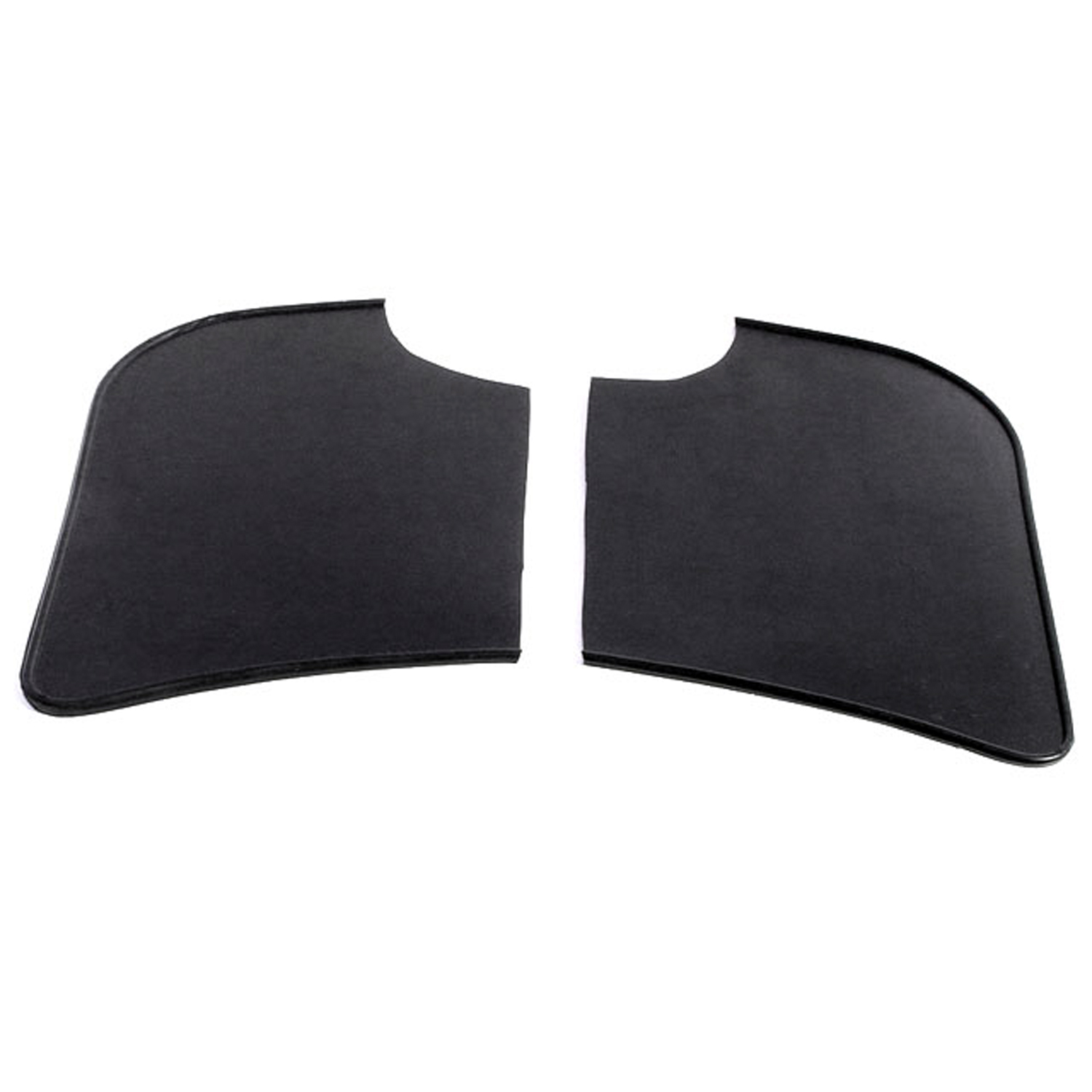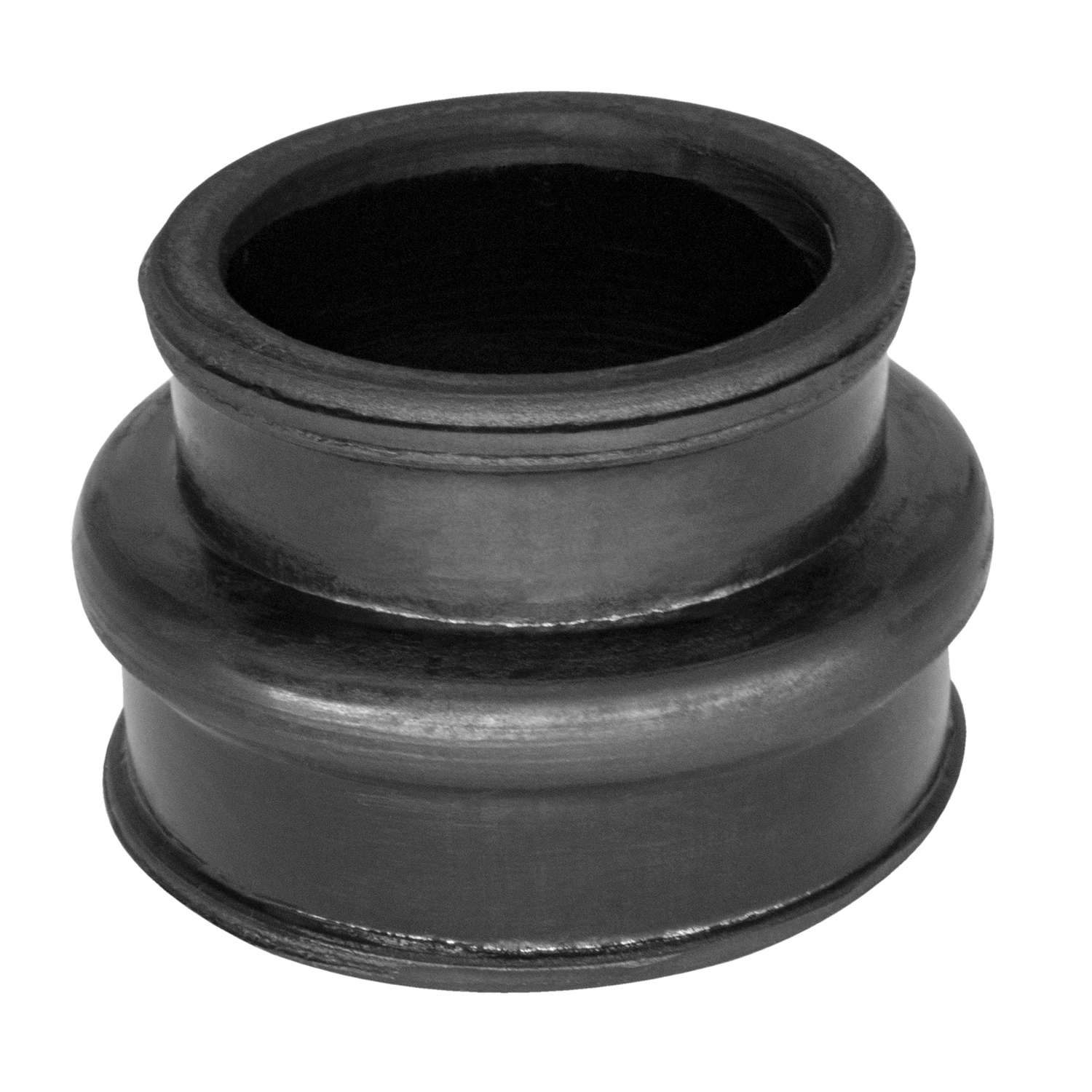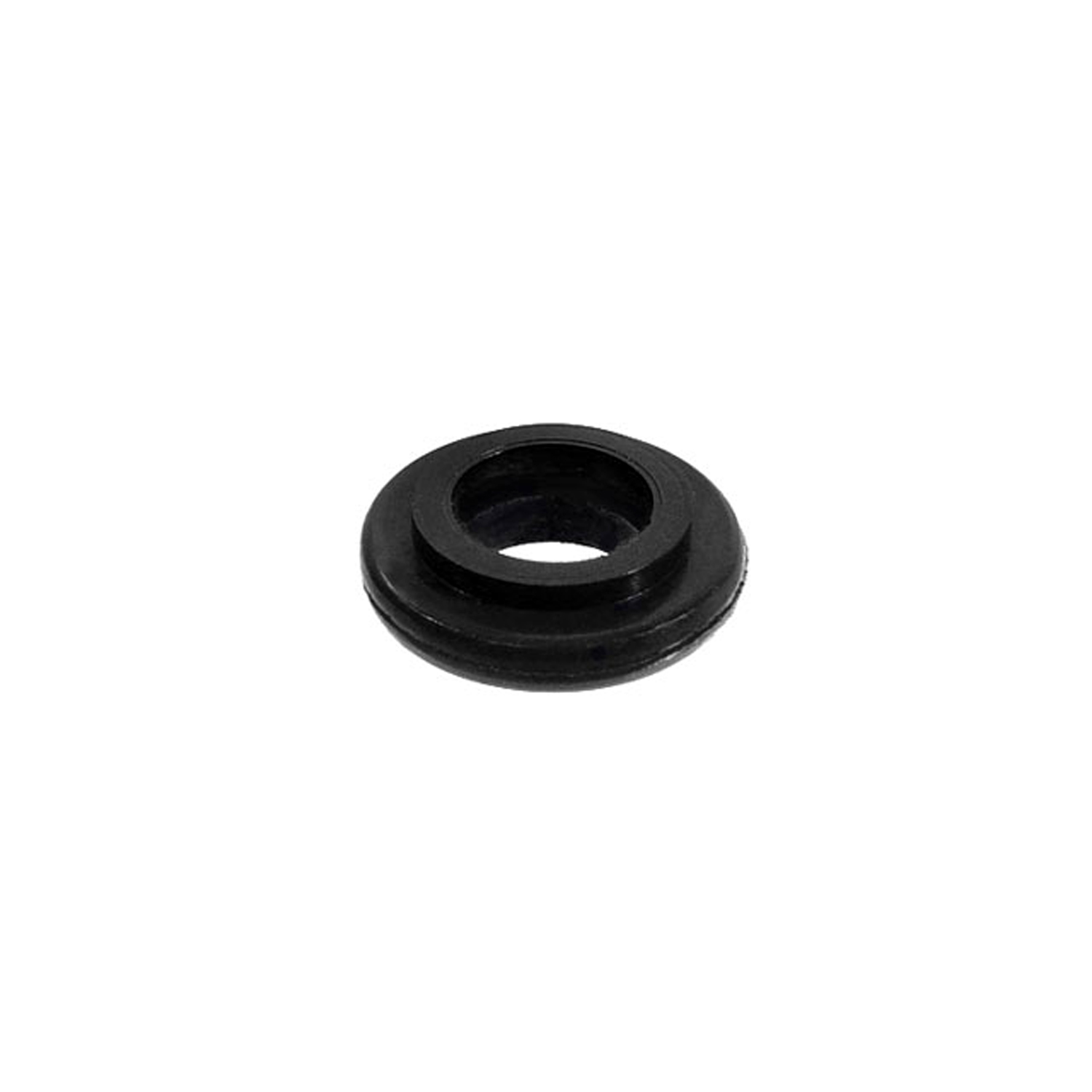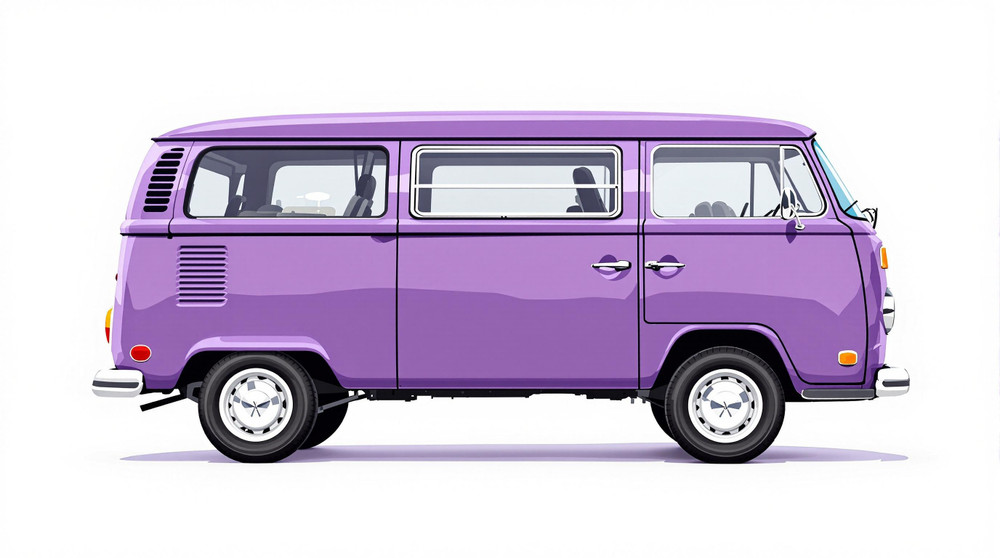Image of 1973 Volkswagen Campmobile, Note: These illustrations use artistic license and may differ from actual historical models.
Performance Metrics
Fundamental Metrics
Emotional Appeal
MMP Rating
| Engine Specifications | |
|---|---|
| Engine: | Air-cooled, rear-mounted, flat four-cylinder |
| Displacement: | 1.6L to 2.0L |
| Horsepower: | 50-70 hp |
| Torque: | 80-90 lb-ft |
| Compression Ratio: | 7.5:1 |
| Ignition System: | Distributor ignition |
| Cooling System: | Air-cooled |
| Performance Specifications | |
| 0-60 Time: | 20-30 seconds |
| 1/4 Mile Time: | 20-25 seconds |
| Top Speed: | 65-75 mph |
| Transmission and Drive | |
| Drive Type: | Rear-wheel drive |
| Transmission Type: | 4-speed manual |
| Fuel and Efficiency | |
| Fuel System Type: | Carburetor |
| MPG: | 17-20 mpg |
| Dimensions and Brakes | |
| Brakes: | Front disc, rear drum |
| Wheelbase: | 94.5 inches |
| Weight: | 3,000 lbs |
Note: Specifications for classic cars are given to the best of our ability, considering the limited and variant data available.
The Quintessential Road-Tripper: The 1973 Volkswagen Campmobile Van
The open road beckons with the promise of adventure, and few vehicles answer that call quite like the 1973 Volkswagen Campmobile Van. Born from the iconic lineage of the VW Type 2, the Campmobile was a home away from home for countless travelers and explorers. Volkswagen, a brand synonymous with reliability and innovation, crafted this vehicle to cater to the wanderlust of the 70s era, providing a compact yet cozy retreat for those who yearned to explore the world at their own pace.
This rolling haven was not just a vehicle but a symbol of freedom and simplicity during a time when society was embracing the great outdoors and the allure of the road trip. A unique fact that captures the spirit of this classic: it was affectionately dubbed the "Hippie Van," a testament to its cultural significance and its role as a canvas for self-expression during one of history's most vibrant periods.
Design and Innovation
The 1973 Volkswagen Campmobile Van boasted a distinctive exterior with its rounded edges, split windshield, and upright stature—a design that was both functional and endearing. The interior was a marvel of space efficiency, featuring fold-down beds, a pop-up roof for additional headroom, and even a rudimentary kitchenette complete with a stove and refrigerator. The quality of materials balanced durability with comfort, creating an inviting space that felt like a cozy cabin on wheels.
Technologically, the Campmobile was ahead of its time, offering features such as a rear air-cooled engine and a simplified electrical system that made it both reliable and easy to maintain. Color options ranged from muted earth tones to vibrant hues, with Pastel White, Brilliant Orange, and Chrome Yellow being among the popular choices that added to its charm.
The most iconic body style was undoubtedly the Westfalia camper conversion, which came equipped with all the amenities necessary for life on the move. It was this version that captured the hearts of adventurers and solidified the Campmobile's place in van life culture.
Historical Significance
The 1973 Volkswagen Campmobile Van left an indelible mark on automotive design, particularly in how it maximized interior space within a compact footprint. Its innovative use of space and home-like features set it apart from other vehicles of its time and influenced future generations of camper vans. The Campmobile's legacy is seen today in the resurgence of van life culture and the ongoing popularity of VW buses among collectors and enthusiasts.
Performance and Handling
Performance-wise, the Campmobile was never about speed—it was about the journey. With a modest top speed and leisurely acceleration, it encouraged drivers to take in the scenery rather than rush through it. Handling was straightforward and honest, with a smooth ride that made long hours on the road less taxing. Behind the wheel, drivers found joy in the mechanical symphony of the air-cooled engine and the tactile feedback from the road that modern vehicles often lack.
Ownership Experience
Owners of the 1973 Volkswagen Campmobile Van cherished it for its versatility. It served as a daily driver, a weekend getaway car, and for some, even a mobile home. Maintenance was relatively simple, allowing average owners to perform repairs themselves. This accessibility added to its appeal and helped build a community of passionate VW bus enthusiasts.
Fun Facts
Did you know that some Campmobiles came with a tent extension that effectively doubled their living space? Or that celebrities like Jerry Garcia of the Grateful Dead were known to own one? While it wasn't breaking any speed records, the Campmobile did set records for sales in its category, becoming an icon of its era despite common criticisms about its modest power output.
Collector's Information
Today, the 1973 Volkswagen Campmobile Van holds a special place in the hearts of collectors. While exact production numbers are hard to pin down, it's estimated that tens of thousands were made. As for value, well-preserved models can fetch anywhere from $20,000 to $40,000 or more, depending on their condition and originality. The market has seen a steady appreciation for these vintage campers as they become rarer and more sought after by enthusiasts looking to capture a piece of automotive history.
Conclusion
The 1973 Volkswagen Campmobile Van is more than just a vehicle; it's a ticket to freedom, an emblem of an era, and a cherished collectible. Its design ingenuity, cultural impact, and enduring charm continue to captivate those who dream of hitting the open road with nothing but time and a horizon ahead. Whether parked at a scenic overlook or cruising down a coastal highway, the Campmobile remains an iconic reminder that sometimes, the best part of life is the journey itself.
1973 Volkswagen Campmobile Catalog of Parts
 1973 Volkswagen Campmobile Gravel Shields. Molded flat without metal backing plates-FS 40Gravel Shields. Molded flat without metal backing plates. Apply with contact cement. 7-5/8" long X 5-5/8" wide at top. Pair
1973 Volkswagen Campmobile Gravel Shields. Molded flat without metal backing plates-FS 40Gravel Shields. Molded flat without metal backing plates. Apply with contact cement. 7-5/8" long X 5-5/8" wide at top. Pair 1973 Volkswagen Campmobile Intake Manifold Boots. Made of rubber. 1-3/8" I.D., 2" O.D-RP 300-BIntake Manifold Boots. Made of rubber. 1-3/8" I.D., 2" O.D. X 1-1/2" high. Pair
1973 Volkswagen Campmobile Intake Manifold Boots. Made of rubber. 1-3/8" I.D., 2" O.D-RP 300-BIntake Manifold Boots. Made of rubber. 1-3/8" I.D., 2" O.D. X 1-1/2" high. Pair 1973 Volkswagen Campmobile Oil Cooler Seal. 7/16" I.D., 7/8" O.D. Each-RP 8-BOil Cooler Seal. 7/16" I.D., 7/8" O.D. Each
1973 Volkswagen Campmobile Oil Cooler Seal. 7/16" I.D., 7/8" O.D. Each-RP 8-BOil Cooler Seal. 7/16" I.D., 7/8" O.D. EachWhy Choose Metro?
For over 100 years, Metro Moulded Parts has been the pinnacle of quality in classic car restoration parts. Our commitment to precision and authenticity in every component ensures a perfect fit and an OEM-level appearance.
- Expert Craftsmanship & Quality: Each part is a testament to our dedication to reliability and perfection, crafted from original designs and thoroughly tested.
- Advanced Technology: We use cutting-edge techniques to create flawless, long-lasting parts that surpass others in performance.
- SuperSoft Sponge – The Ultimate Door Seal: Not only are our door seals 30% softer than competitors', but they're also guaranteed to never leak. They effectively reduce wind and road noise, enhancing your classic car's comfort and driving experience.
- Proudly American: Our parts are a product of American craftsmanship, made in the USA with a spirit of excellence and heritage.
- Unrivaled Warranty: We back our products with a 30-year industry-leading warranty, a testament to our confidence in their quality.
Join us in preserving the legacy of classic cars with parts that are crafted for perfection, not just made.

